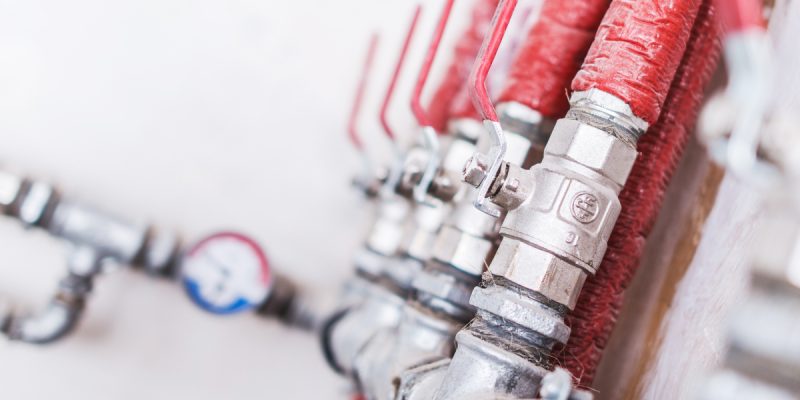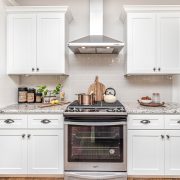Many individuals find solace in the comfort of their homes, especially when they can enjoy a warm and relaxing shower after a long day’s work. However, if unknown issues affect your home’s water pressure, you cannot enjoy such comfort.
Optimal water pressure is essential not just for enjoyable showers but for a variety of household activities. Whether washing dishes, doing laundry, or using faucets, proper water pressure ensures a seamless and efficient experience. Additionally, maintaining the correct water temperature further enhances overall satisfaction. Regrettably, when water pressure and temperature fail to align, the expected convenience can be significantly affected.
Causes of Low Water Pressure at Home
Water pressure and volume are distinct factors in your home’s water supply. While volume refers to the amount of water flowing into your home, pressure determines its force or intensity.
It is possible to have sufficient water volume but inadequate pressure to meet your needs. Below are some common reasons for experiencing low water pressure at home:
1. Clogged Faucet Aerators
If you have hard water, mineral deposits can accumulate in the small openings of your faucets. What this does is restrict the flow and volume of water. To address the issue, you can remove the aerators and soak them in vinegar for approximately eight hours. Afterward, use a toothbrush and toothpick to remove any remaining mineral deposits.
2. Broken Pressure Regulator
The pressure regulator is a plumbing component that ensures the water pressure in your home remains safe. However, like any mechanical device, the regulator can sometimes fail, resulting in lower water pressure throughout your home. In such a case, it may be necessary to replace the pressure regulator.
3. Low-Flow Fixtures
Low-flow fixtures like faucets and shower heads are designed to conserve water. However, older versions of these fixtures may provide inadequate water pressure and unsatisfactory flow. Upgrading to newer models can result in stronger pressure, resulting in a more refreshing and satisfying experience.
4. Rusted Pipes
Issues with your plumbing system can cause a sudden loss of water pressure in your home. Over time, old pipes, especially metal ones, can corrode and rust. This can restrict water flow and reduce the pressure throughout your home. Additionally, leaking pipes can lead to water loss.
5. Water Heater Problems
The water heater in your home plays a crucial role in your plumbing system by heating the water for various purposes, including showers. Neglecting regular heater maintenance, such as annual flushing as recommended by manufacturers, can result in reduced performance. Additionally, the age of the water heater can contribute to decreased water pressure. If this is old and damaged, replace it immediately.
6. Partially-Closed Valves
A typical home plumbing system includes several water valves. If these are not fully open, it can restrict water flow and lead to low pressure. It is common though for valves to be partially closed, said a plumber in Denver, especially after a recent plumbing work or due to oversight.
7. Faulty Mixing Valve
A mixing valve, typically found in single-handle shower faucets, is responsible for regulating the flow of hot and cold water to the shower head. When it malfunctions, it can lead to a decrease in water temperature and a decline in shower water pressure. Repairing a mixing valve is a challenging task, necessitating the assistance of a professional plumber who may have to install a replacement.
8. Main Valve Problems
Temporary low or no water pressure in your home can occur during repairs or upgrades to the main water meter valve, which is typically under the control of the city government. It is also possible that the valve is not fully open after a recent plumbing repair. In such cases, consulting a plumber trained in water pressure can help determine the status of the main supply line.
9. Faulty Volume Valve Control
A volume valve regulates water pressure in a single-control shower. If this gets damaged, you may need to replace it to restore adequate water pressure. It is advisable to have a professional plumber handle this job for you.
10. High Water Usage
Low water pressure during showering can sometimes be influenced by external factors, such as high water usage in your area. Peak times, such as early mornings before people leave for work, often influence your home water pressure level.
Conclusion
Low water pressure is a common issue that many homeowners often face. A consistently low pressure throughout your house, however, could indicate a more significant problem that may involve your plumbing system. Potential causes may include hidden leaks or damaged water valves, which can affect the overall water pressure level.
To address this issue, it’s best to contact professional plumbers for a thorough inspection of your plumbing. Often, they can identify the underlying causes of your low water pressure and come up with the best solution.




















